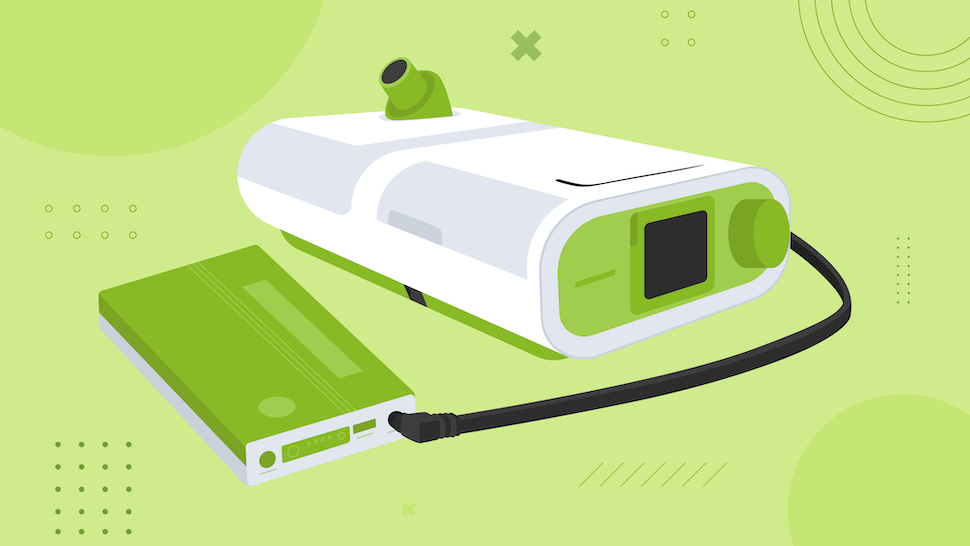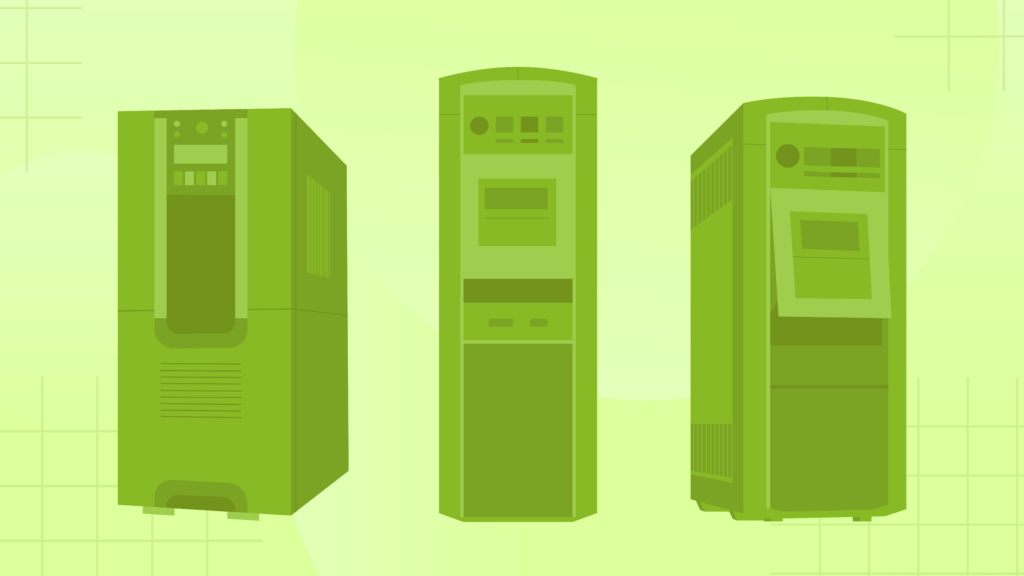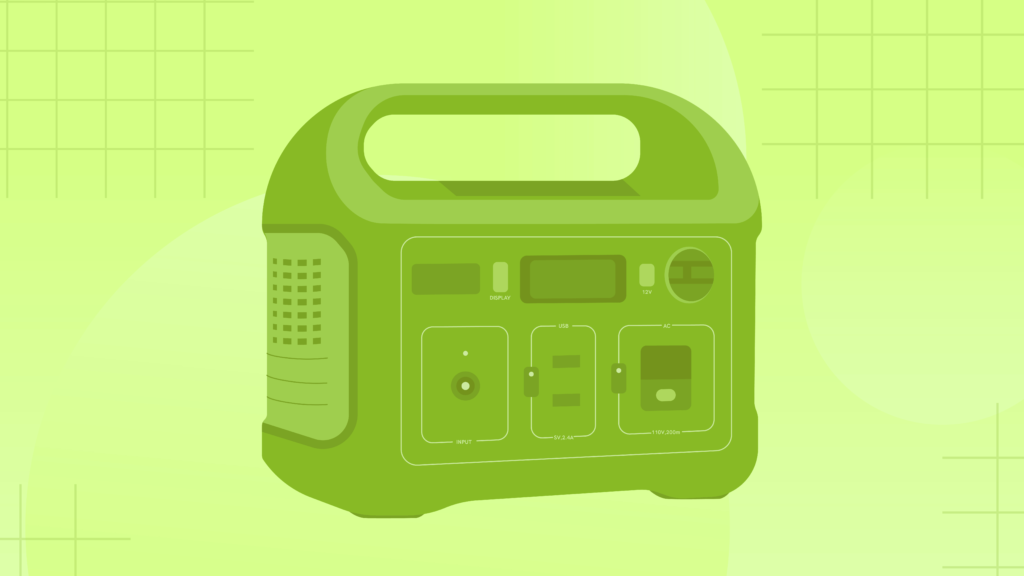Understanding your options to continue your CPAP therapy when wall power isn’t available
CPAP therapy is a common and effective way to manage sleep apnea symptoms and restore sleep quality and overall quality of life.
However, unlike a medication or lifestyle change, it requires power and specific equipment to provide its benefits.
In most cases, this isn’t a problem.
You can plug your machine into the power outlet in your home—or hotel if you’re traveling—connect your tubing and masks, and enjoy a great night’s sleep.
But what about when the power goes out, or you’re away from electricity for an extended period—such as on a camping trip or backpacking vacation?
It turns out you have many options available to help! With a bit of preparation and understanding, you can still enjoy most—if not all—of the benefits and comforts of your CPAP machine.
This guide will cover options to keep your CPAP machine running without wall power and some considerations to help you make the most of them.
Power Alternatives for CPAP Machines

If you don’t have access to traditional electrical sources, most of your alternative power options fall into one of three categories:
- External CPAP batteries
- Uninterruptible power supplies (UPSes)
- Solar generators
Each category offers a unique blend of benefits and concerns.
So let’s take a look at each.
External CPAP Batteries
External CPAP batteries are likely the most streamlined option.
They’re compact and typically designed for travel and on-the-go use.
However, they’ll also double as a handy way to keep your equipment running during a power outage.
Most batteries will feature enough power to get through a single night of sleep with adjustments to your machine’s settings (more on that later).
This means you could be in trouble if your outage or off-the-grid situation lasts more than a day.

However, they’re much lighter than most options in other categories.
Their limited battery capacity has a significant perk—they’re often approved for air travel by the world’s regulatory agencies.
So not only will they work well in a pinch, you can probably use them on vacations, during business travel, and in other situations that aren’t quite as surprising but important times to continue having access to the PAP therapy.
But if you’re looking for something as an automatic fail safe for use at home.
They’re not ideal.
In most cases, while you can connect the battery to your machine and charge it while your CPAP machine runs. They won’t typically automatically turn on if power goes out.
So you’ll likely need to wake up and turn your equipment back on should you experience any power issues. For people looking for a unit for off-grid use, that’s less of a concern, though.
Uninterruptible Power Supplies
These bulky devices are an ideal option for use as an automatic backup for home use.
You can plug the UPS into the wall, plug your CPAP machine into the UPS, and mostly forget about it.
These devices include a large battery—capacity will depend on the model—which it uses to stabilize the delivery of electricity to any connected devices.
Should the power go out, the UPS will automatically kick in and keep things running.
Once power is restored, the UPS will then switch back to charging.
The larger capacity consumer models offer more than enough charge to keep your CPAP machine running for multiple sleep sessions without worry.

Best of all, this all occurs without needing you to interact with the power supply.
This all sounds pretty awesome.
So you’re probably wondering where the catch lies.
These aren’t particularly portable.
When you buy a model with enough capacity to provide reliable battery life, they’re often quite heavy and can be a pain to move around the room—let alone pack into a travel bag or camping supplies.
Even if you feel like lugging the thing with you on adventures for off-the-grid use, you probably can’t take it on a plane due to the capacity.
So this one is firmly for emergency use or as a failsafe.
The one exception to this might be RV travel because you can buy one and leave it in the RV where you need it, much like you would if you were using it at home.
Solar Generators
These devices are relatively new to the market.
But they’re an exciting combination of the pros and cons of both external CPAP batteries and uninterruptible power supplies.
They’re bulky yet portable enough.
A unit with enough power to run your CPAP machine for more than a week will likely weigh less than 9 kilograms.
Sure, that’s not pocket friendly.
But most people could likely stow it in their trunk or bring it out of the garage in an emergency without too much hassle.
Better still, most provide access to DC power, boosting the efficiency and battery life compared to most UPS and external CPAP battery models.

Many support recharging via solar panels for extended outages or off-the-grid use.
Hence their name—solar generators.
With a set of 100w+ panels and a day of direct sunlight, you could easily top the battery up enough to provide use throughout the following night—and likely longer.
Meanwhile, they feature a variety of ports—often including an assortment of standard power outlets, DC outlets, USB, and USB Type-C outlets—to help you keep other things running throughout the power event or while you’re off the grid.
This makes solar generators some of the most flexible options for emergency use or camping and a true multitasker.
Some even support power passthrough, allowing you to use them much like an uninterruptible power supply and charge the solar generator while also powering your machine.
If this is a feature you want, check product specifications, as the feature is not available on all models.
The flexibility and excellent capacity don’t mean solar generators are perfect, though.
Most models are not approved for air travel.
They also rely on access to traditional power or strong sunlight to recharge.
Even a slightly cloudy day will greatly diminish recharge efficiency.
Then there’s the price.
A mid-to-high capacity solar generator with a couple of panels to charge it might run you as much as your CPAP machine.
However, if you’re willing to forgo the solar panels and keep your generator topped up for emergencies using traditional power—or you only want a unit with enough power for a couple of nights—you can significantly cut the price of a package.
Using Your Alternative Power Source
While exact steps will depend on the model of the device you use, they’ll typically be used in one of two manners: automatically or manually.
With automatic setups, you plug your CPAP machine into the alternative power source and then plug the alternative power source into your wall or connect it to another charger.
Then when power is lost, the battery component can kick in and keep your machine running.
With manual setups, you use your CPAP machine as normal until a power cut occurs or until you’re in your off-the-grid environment.
You then connect the CPAP machine to the alternative power source and continue to use it.
In these cases, if the power cuts in the middle of the night, you’ll likely need to wake up, switch the power source for your CPAP machine, and go back to sleep.
However, there are also a few tips you can keep in mind to get the most out of your alternative power source—whether it takes over automatically or you’re switching to it manually.
Minimize Power Usage by Limiting Features
Most CPAP machines today include a range of convenient features and comforts—including heated humidification or heated tubing.
If you’re concerned about battery life, disabling your heated humidifier or heated tubing can instantly double your battery run time.
This is because the heater is one of the most power-hungry components on your machine.
While humidification can help to improve comfort, reduce nasal or throat irritation, and improve compliance, if you had to choose between a night with no PAP therapy and a night with PAP therapy but without a humidifier, most would rather have the PAP therapy.
Heated hoses can be equally draining. If you don’t have the option to disable the heated coils around your CPAP tubing, consider picking up a basic CPAP tubing model that is compatible with your hardware for use in emergencies.
Get Direct for Better Battery Life
If the alternative power source you’re using offers a DC power output, the extra expense for a DC power adapter for your CPAP machine will likely pay off in added battery life.
While this isn’t always an option with UPS units, many external battery packs or solar generators will offer DC output as an option.
Experts estimate that using this can improve battery efficiency by as much as 10%—possibly giving you an entire extra night without worrying about recharging your power source, depending on the capacity!
Another advantage to DC power adapters is that you can often use them in cars.
So if you’re caught in an unexpected situation, you might be able to shelter in your car while still enjoying the benefits of your CPAP machine.
Set Indicators for When Power is Back
If you don’t have an alternative power source that will last for multiple sleep sessions or you’re using one that you must manually connect or disconnect, you might consider setting up some indicators that power is back that will wake you when power returns.
While this will interrupt your sleep, it will ensure that your battery doesn’t run low and that your PAP therapy ends before you wake.
This can be as simple as setting a wall-powered radio to a loud volume or flipping on the light switches in your room before heading back to bed.
When power is restored, the additional noise or light should wake you.
You can then reconnect your machine to standard power before falling back asleep.
Travel CPAP Machines: An Alternative to Alternative Power Sources
Before wrapping things up, we want to mention one more option that takes a different approach.
Instead of using an alternative power supply to power your usual CPAP machine, you might consider an alternative CPAP machine instead.
Travel CPAP machines can’t always provide the highest pressure ratings required and certainly don’t offer all of the comforts and conveniences of more premium standard PAP machine models.
However, some include battery features or offer battery packs designed specifically for them.
They’re also smaller units with simplified feature sets.
So while it’s not a guarantee, there’s a good chance that they’ll be more energy efficient than a full-size CPAP machine.
If this sounds interesting, check out our guide on what to look for when choosing a travel CPAP machine to explore the pros and cons and a few recommendations based on popular models available today.
Key Takeaways
- Without power, your CPAP machine cannot provide the therapy you need.
- Alternative power sources are a flexible option to ensure access to your PAP therapy in power outages, emergencies, and when in off-the-grid scenarios such as camping.
- Most alternative CPAP power sources fall into one of three categories: external CPAP batteries, uninterruptible power supplies, or solar generators.
- External CPAP batteries are the smallest and most portable options but are also on the lower end for capacity.
- Most external CPAP batteries are approved for air travel.
- Uninterruptible power supplies provide a convenient, automated failsafe for your CPAP machine but are heavy and not suited for travel. They also have limited options for use during extended outages.
- Solar generators are an excellent middle-ground option offering improved portability and multiple recharging options for long-term off-the-grid usage. However, they’re still not particularly suited for air, rail, or bus travel.
- When using your CPAP machine with an alternative power source, turning off features which aren’t mandatory—such as heated humidification or heated tubing—can improve battery life.
- Using a DC power adapter can also improve efficiency while allowing you to use your CPAP machine in a car.
- If you’re experiencing a temporary power outage, turning on light switches, lamps, or a powered radio can alert you when power returns and wake you so that you can reconnect your CPAP machine to traditional power.
- Depending on your budget and preferences, a travel CPAP machine might be an interesting alternative to a backup power source.
CPAP Supply is Canada’s leading online CPAP supply store in customer satisfaction. Our selection of CPAP machines, masks, and tubing offers the reliability of major brands and models with affordability you won’t find at retail stores or direct from manufacturers. If you’re looking for ways to keep your CPAP machine running during power emergencies, browse our selection of CPAP power options or contact us today to discuss your needs!
